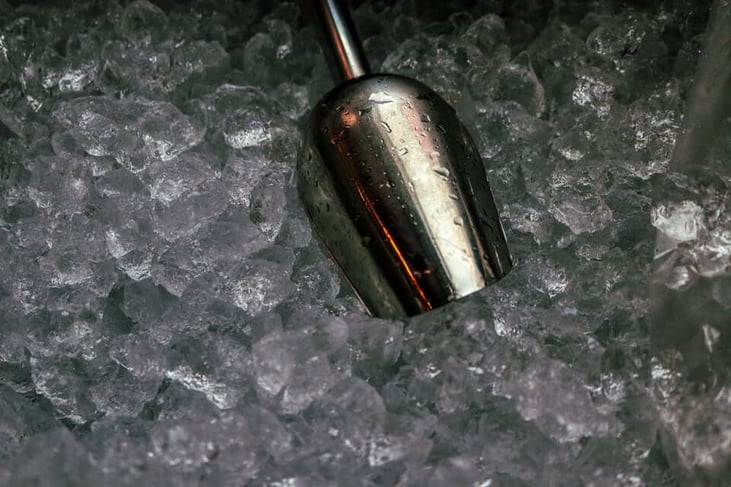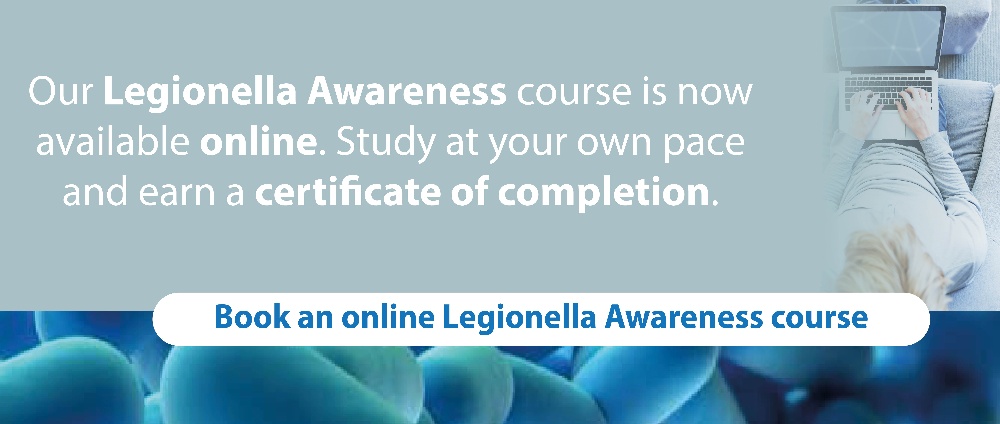During 2017, I like many in the water hygiene industry came across a BBC watchdog investigation that confirmed that Ice from three major coffee chains in the UK had been found to contain faecal bacteria. Whilst this was, and remains unsettling, it wasn’t perhaps that surprising.
Water hygiene practices remain variable and irrespective of any inherent system risks, the control of operational risks whilst using ice machines remains equally important. This led several of our clients in both public and private sectors to then ask us, is there a Legionella bacteria risk from an ice machine?
A real or perceived risk?
At temperatures below 20°C there is good evidence to confirm that Legionella bacteria would largely be either dormant or dead – on that basis alone, one may think that risks would perhaps be relatively minimal. However, after thawing, and if the ice is contaminated, would this then place an individual at risk and how would the bacteria be transmitted? HTM04-01 Safe Water in Healthcare Premises Part B states:
“The principal route of infection for Legionnaires’ disease is through inhalation of the bacteria into the lungs via aerosols. The risk rises with increasing numbers of inhaled bacteria. Aspiration of contaminated drinking water into the airways has also been described as a mode of transmission of Legionnaires’ disease. Aspiration can be a significant source of legionellosis in certain vulnerable patients including those using nasogastric tubes, stroke patients, those taking sedatives and narcotics, and those with motor neurone disease. Sucking ice made from contaminated water has been linked to some nosocomial cases of Legionnaires’ disease.”
Cases of Concern
As far back as 1985, the US journal Infection Control published a study ‘Isolation of Legionella pneumophila for the cold water of hospital ice machines: implications for the origin and transmission of the organism’ (Stout J.E., vol. 6, no. 4, pp. 141-46 ) which indicated in a particular healthcare environment L.pnuemophila was present in 8 of 14 ice machines tested, these were seeded at low levels via a tanked cold water system and originally via the incoming cold drinking main and significantly that the issue warranted further investigation.
More recently in 2013, at the University of Pittsburgh Medical Center, a patient contracted and subsequently died from Legionnaires’ disease linked to an ice machine in the hospital. The investigation showed the patient aspirating bacteria taken from within small pieces of the ice he’d ingested and not from the hospitals drinking water supply or other aerosol producing supplies.
A similar incident was reported at the Wesley Hospital in Brisbane, Australia during 2016.
Who is at risk?
Legionnaires’ disease poses a significantly greater risk to those who are elderly, those who are immunocompromised as a result of illness or treatment, those having underlying health issues or those that have existing respiratory diseases that makes the lungs more vulnerable. Ice machines are now more prevalent than ever before and their installation and use, particularly in Healthcare premises where the aforementioned groups are frequently evident, need a watchful eye.
Why are we seeing Legionella related issues attributed to Ice Machines?
Although all domestic hot and cold-water systems including ice machines/dispensers should be regularly checked, cleaned and disinfected to ensure they are safe for use, evidence has shown that their day to day management can be inadequate.
Often ice machines are installed for the wrong reasons, even in healthcare settings. This is also done without knowledge of the maintenance regimens critical to ensure these units remain safe whilst in use. They can be located in areas quite unsuitable for their use and units are also often installed by individual departments using local budgets and not via a centrally managed contract or via procurements teams.
The latter would more likely ensure an adequate maintenance regimen is set up, at the correct frequency and undertaking the correct checks and filters changes. In common with all health and safety risks, one’s initial consideration when thinking about ice machines is whether as ‘an established risk’ this can be eliminated, i.e. is the machine necessary in the area it is situated, or simply a preference to allow us to use ice in our drinks and can it be removed?
Items to ensure risk minimisation
Having established that there is a need for the unit, i.e. perhaps in a physiotherapy environment, or even in a social setting where the use of ice in soft drinks may well be deemed ‘necessary’, we then need to confirm which factors may influence risk and act to minimise these.
Design issues
-
- The design, installation, location and risk assessment of all equipment should be approved by the organisation’s Water Safety Group [WSG];
- The Legionella risk assessment should consider:
a. carbon filtration in these devices, which are a high nutrient source for bacteria;
b. cleanability and maintenance of the machine. - The water supply should be taken from a wholesome supply via a double-check valve to prevent backflow and be upstream of a regularly used outlet with the minimum of intervening pipe-run, that is, less than 3m and the cold water supply should not be softened;
- The usage should be sufficient to avoid deterioration in water quality, i.e. to ensure that the inlet water temperature does not exceed 20°C;
- The unit should also be positioned so that the warm air exhaust does not impinge directly on taps or hoses supplying cold water and to provide access for maintenance;
- The pipework should be as short as possible from take-off point (mains water tee);
- The cold water supply pipework should be copper and fitted with a local isolation valve and drain valve;
- The flexible pipe connector [Non EPDM] should be kept as short as possible.
- The design, installation, location and risk assessment of all equipment should be approved by the organisation’s Water Safety Group [WSG];
Maintenance issues
-
- Maintenance for ice-making machines should be carried out in accordance with the manufacturer’s recommendations;
- Care should be taken to ensure that the water supply to the ice-making machine is not subjected to heat gain;
- Ice should not be allowed to stagnate in an ice-making machine’s storage bin, but should be changed frequently;
- Appropriate cleaning and hygiene procedures including the cleaning and disinfection of scoops etc. should be put in place;
- Additional cleaning to ensure adequate hygiene of nozzles etc. should be put in place as required.
- Maintenance for ice-making machines should be carried out in accordance with the manufacturer’s recommendations;
HTM04-01 and HBN 00-09 – Infection control in the built environment also state specifically, with regard to ice for patient consumption:
-
- Ice machines should be of a type that dispenses ice by a non-touch nozzle;
- Ice should be made directly from water that is of drinking quality. Ice for the immunocompromised should be made by putting drinking water into single-use ice-making bags, then into a conventional freezer;
- Ice Machines should not be installed in augmented care areas;
- Where ice is needed for treatment purposes, it should be made using water obtained through a microbiological POU filter or boiled water in sterile ice trays or ice bags.
- Ice machines should be of a type that dispenses ice by a non-touch nozzle;
The management of Legionnaires’ disease at both corporate and departmental levels continues to test the most vigilant of organisations even though many of the issues faced are by now both routine and well understood. The aforementioned risk minimisation factors will ensure Ice remains safe to use in clinical, commercial and other environments, hopefully without bacterial concerns.
Feel free to reach out if you have any questions about the issues mentioned above or if you would like to consult with one of our experts on water hygiene.
Editor’s Note: The information provided in this blog is correct at date of original publication – October 2020.
© Water Hygiene Centre 2020









